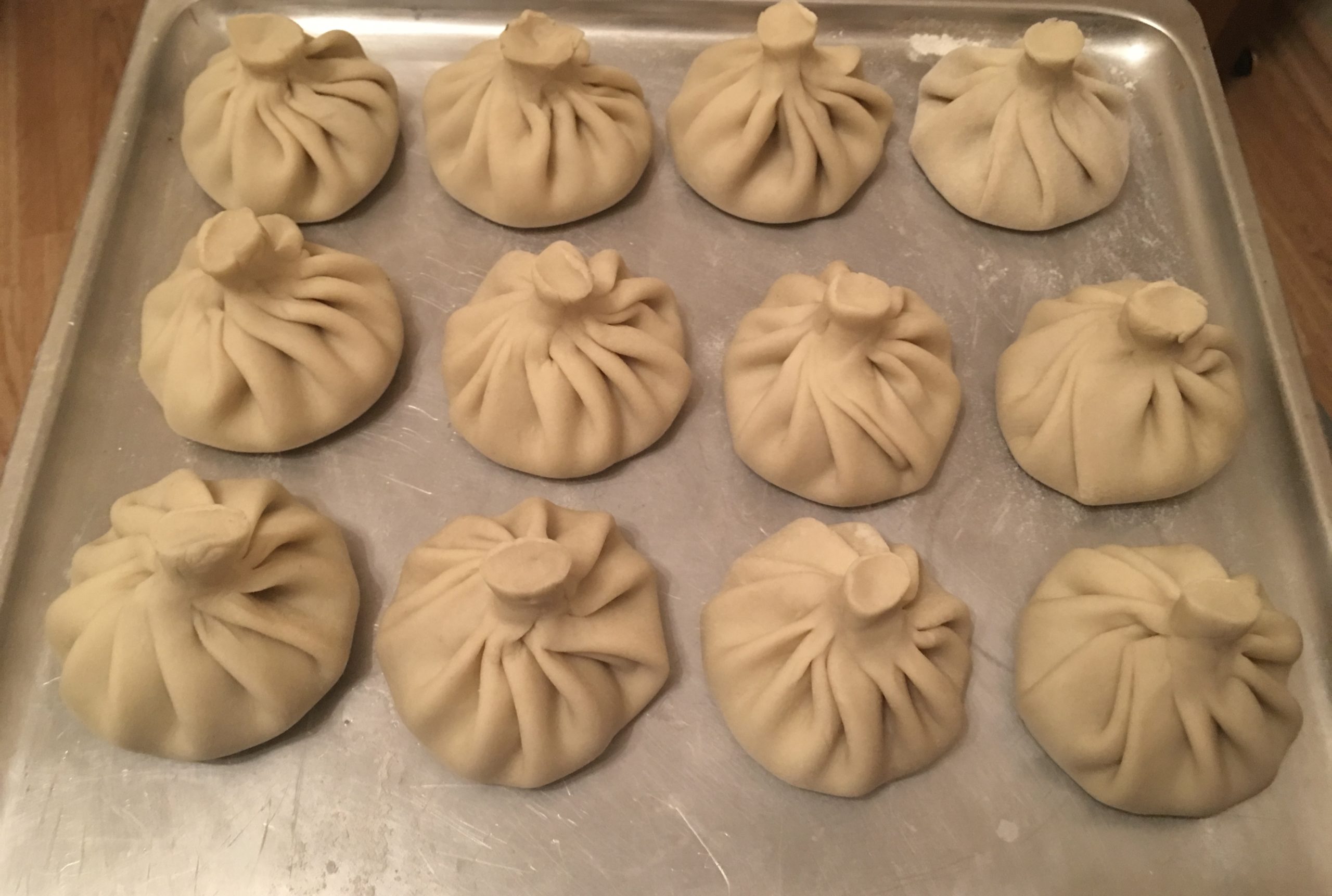Probably not a single dish on earth has as many versions of its origin as khinkali. One of the most common stories says the following. During the war between Georgia and Persia in the 18th century, there were a lot of wounded soldiers who, for various reasons, could not eat solid food. Then the housewives in the mountains had practically nothing but sheep, flour and eggs. So they came up with one simple dish that helped save many lives. Delicate and soft khinkali with a fragrant broth inside were born.
The most interesting story about khinkali explains why ideal pouches should have exactly 28 folds, no more, no less. It’s all about the sacred meaning of the number 28 (the Sun passes through a large circle of the celestial sphere in 28 days). In ancient times, the Georgians used a time system that was different from the modern one: they had 13 months a year, each of which consisted of 28 days, which in total was 364 days.
The logic of this people was simple and laconic. The tail of the khinkali is the sun, and the 28 folds around are the days of the solar cycle. Another version about the origin of this dish comes from historians. They believe that the ancestors of khinkali were originally the ancient ethnic group Pshuari, thanks to which the dish began to spread far from its habitat. Pshuari was added to khinkali with mint, which gave them an incredible aroma and special piquancy.
In Georgia, they believe that the homeland of the beloved national dish is the village of Pasanauri, which is located on the way to Kazbegi. There you will find completely different bags – very fatty and small, but (before losing gastronomic consciousness) very tasty!
About meat
The most important thing in this Georgian dish is meat. Khinkali is not your usual big dumplings, it is an independent culinary unit! Only minced meat wrapped in a bag of dough, by no means minced meat, otherwise it is no longer khinkali. Chopped meat allows you to keep all the juice, which is an integral part of the dish. When cooking, it is customary to use lamb, but options with veal are also allowed.
More photos in our gallery- https://iphoto365.com/gallery/
Pinterest- https://www.pinterest.com/iphoto3657/_saved/

